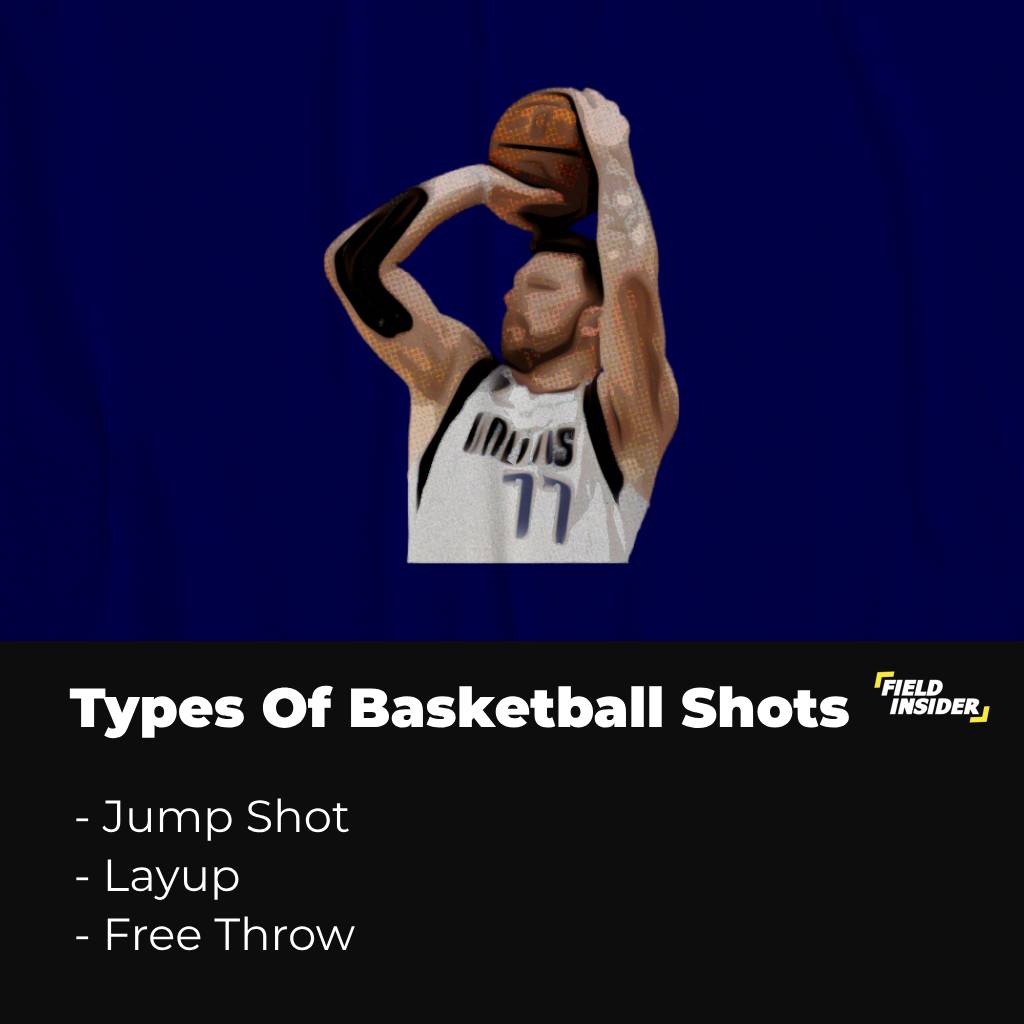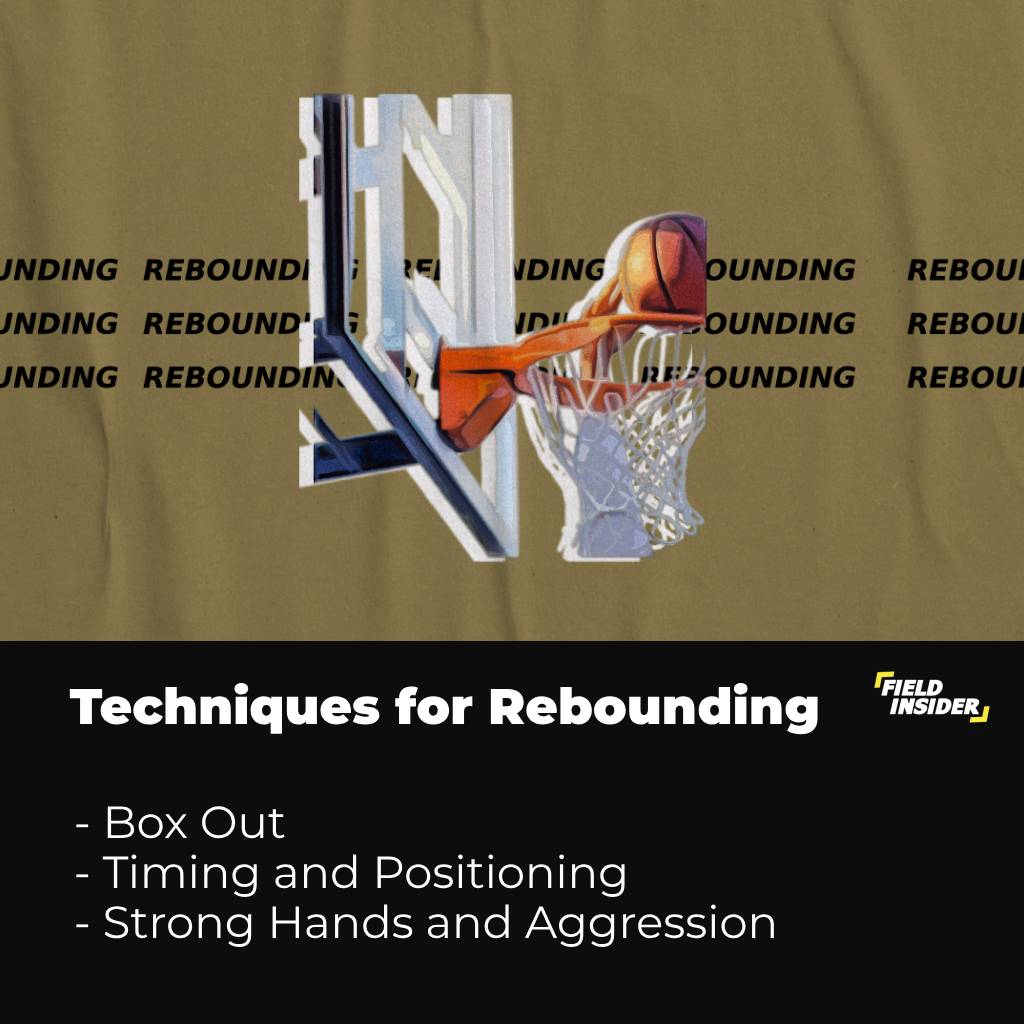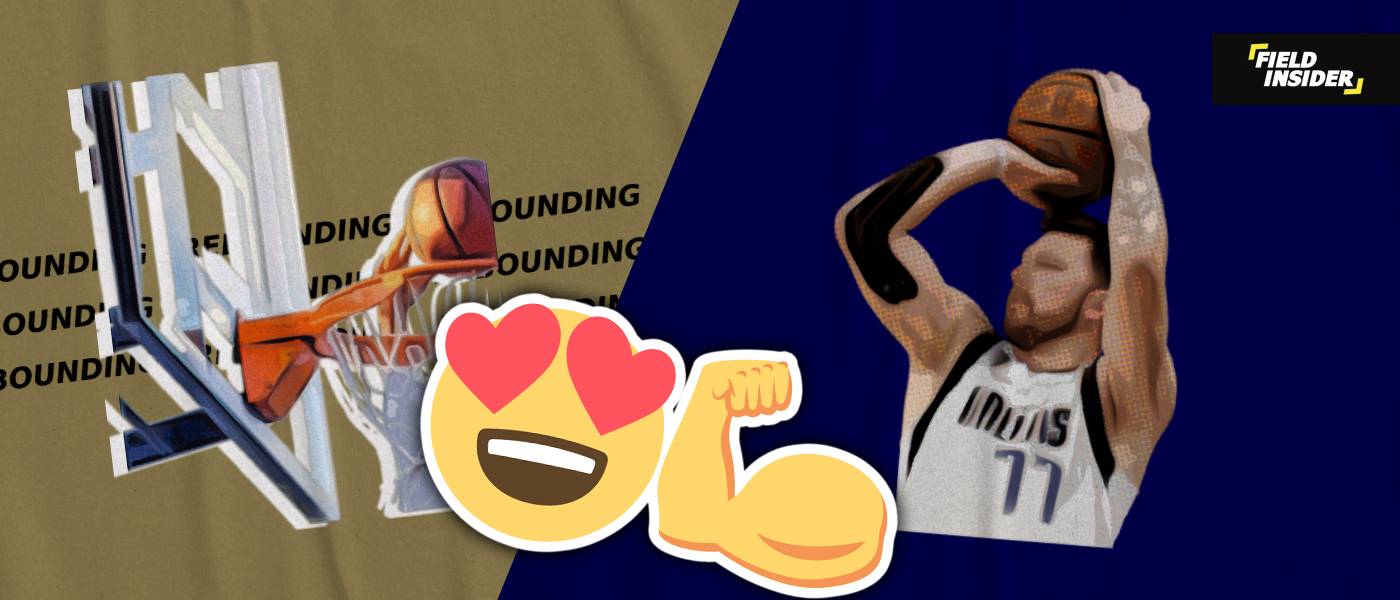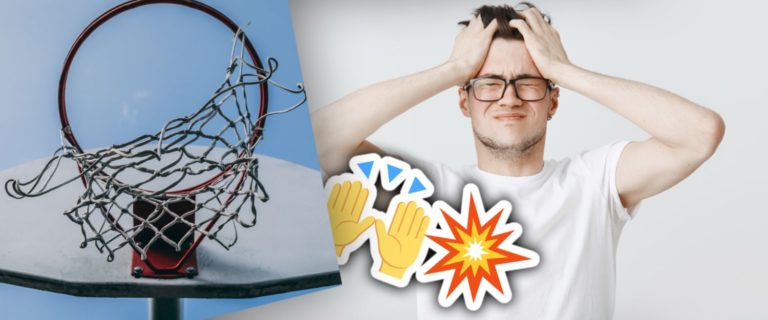Basic Skills Of Basketball: Mastering The 5 Fundamentals
Basketball, at its core, is a blend of physical prowess and strategic finesse. We’ll explore the five basic skills of basketball: dribbling, shooting, passing, defense, and rebounding.
Each skill is a building block, contributing to a player’s overall competence and understanding of the game. The journey from a novice to a proficient player hinges on mastering theses basic skills of basketball.
| The Skill | Explained |
| Dribbling | Essential for ball control; practice various dribbling techniques. |
| Shooting | Key to scoring; focus on balance, shooting arc, and follow-through. |
| Passing | Crucial for teamwork; develop different passing types and techniques. |
| Defense | Protects the basket; involves stance, stealing, and shot-blocking. |
| Rebounding | Controls the boards; requires timing, positioning, and aggression. |
| Other Skills | While individual skills in basketball are important, leadership and teamwork play equally crucial roles in the game. |
Dribbling: The Foundation of Ball Control
What is Dribbling In Basketball?
Dribbling in basketball is more than just bouncing the ball. It is a fundamental skill that involves the continuous and controlled bouncing of the ball while moving around the court.
This movement is achieved by tapping the ball with the fingers and ensuring it stays within arm’s reach. It’s a dynamic skill that combines agility, coordination, and spatial awareness.
Why Dribbling is Crucial
Ball Movement: Dribbling is the primary way a player legally moves the ball across the court. Without dribbling, a player’s mobility with the ball is severely limited.
Maintaining Possession: Effective dribbling prevents turnovers. Being able to dribble under pressure, navigate through defenders, and maintain control of the ball is vital for keeping possession and advancing the play.
Creating Offensive Opportunities: Skilled dribblers can create scoring opportunities for themselves and their teammates. By effectively maneuvering around defenders, a player can open up the court, find passing lanes, or create a clear shot at the basket.
Controlling the Game’s Pace: Dribbling allows a player to slow down or speed up the game. This control can be crucial in situations where managing the clock is important, such as in the final minutes of a close game.
Versatility and Adaptability: A good dribbler can adapt to different defensive strategies. Whether facing a man-to-man or a zone defense, effective dribbling can help in finding weaknesses in the opposition’s setup.
Psychological Edge: Proficient dribblers can psych out their opponents. The confidence and skill displayed in advanced dribbling techniques, like crossovers or behind-the-back moves, can intimidate defenders and create mental advantages.
Techniques for Effective Dribbling
Hand Placement and Control
- Fingertip Control: The essence of proper dribbling lies in using the fingertips rather than the palm. This approach offers greater control, sensitivity, and quick adjustment capabilities.
When the ball is dribbled with the fingertips, a player can more effectively regulate the ball’s height, speed, and direction.
- Wrist Flexibility: Along with fingertip control, wrist flexibility plays a significant role. The wrist must be loose and agile, allowing for quick flicks and changes in the ball’s trajectory. This flexibility helps in responding to defensive movements and in maintaining possession under pressure.
- Arm Position: The arm should be slightly bent at the elbow, providing a relaxed yet controlled posture. This position aids in quick movements and helps in absorbing the impact as the ball hits the ground, allowing for smoother and more controlled dribbling.
Crossover Dribble
- Purpose and Execution: The crossover dribble is a deceptive move where the ball is swiftly transferred from one hand to the other. This move is typically used to mislead or evade defenders.
Executing a successful crossover involves a rapid and low movement of the ball across the body, making it difficult for the opponent to anticipate or react.
- Timing and Speed: Timing is critical in the crossover. It should be executed when the defender is off-balance or when there is an opportunity to exploit a gap in the defense. The speed of the crossover is essential; a quick, sharp movement can effectively create space for a shot or a pass.
- Protecting the Ball: During the crossover, it’s vital to keep the ball low and close to the body to protect it from being stolen. The body can be used as a shield between the ball and the defender.
Behind-the-Back Dribble
- Advanced Skill: The behind-the-back dribble is a more advanced technique, used primarily to protect the ball in tight situations or when a defender is closely guarding.
- Execution: This dribble involves bouncing the ball behind the back from one hand to the other. The key is to ensure the ball is bounced firmly and accurately to the other hand without losing sight of the court. This move requires excellent hand-eye coordination and spatial awareness.
- Situational Use: The behind-the-back dribble is particularly useful when a player is trapped or in a congested area of the court. It’s a surprise element that can throw off defenders, giving the dribbler a momentary advantage to make a play.
Improving Dribbling Skills
Regular practice, focused on control and speed, and incorporating a variety of dribbling styles, is vital for enhancing dribbling skills.
Remember, dribbling is not just about moving the ball; it’s about doing so effectively, efficiently, and strategically. By integrating drills to improve your dribbling, you can develop into a more versatile and skilled basketball player.
Shooting: Scoring Points with Precision
The Role of Shooting in Basketball
In basketball, the ultimate goal is to score points, and shooting is the direct method to achieve this. Every offensive play, strategy, and movement on the court is, in many ways, orchestrated to create a shooting opportunity.
It’s a skill that demands precision, correct technique, and situational awareness. It not only contributes to the individual player’s arsenal but also significantly influences the team’s overall strategy and success.
Types of Basketball Shots
There are various shooting techniques, such as the jump shot, layup, and free throw, each with its unique mechanics and situational use. Mastering these techniques is crucial for a player to be versatile and effective in different game scenarios.

Jump Shot
- Definition and Execution: The jump shot involves a player leaping from the ground and shooting the ball at the peak of their jump. This shot is often taken from mid to long-range distances.
- High-Percentage Shot: Regarded as a high-percentage shot, especially when taken from a player’s effective shooting range. It’s a staple in the scorer’s repertoire due to its difficulty for defenders to block.
- Technique Elements: Key elements include proper foot alignment, a balanced body position, and a smooth shooting motion. The shooter must also focus on the arc and follow-through to ensure accuracy.
- Situational Use: Ideal for situations where a player has some distance from the defender or needs to shoot over taller opponents.
Layup
- Close-Range Execution: The layup is executed close to the basket, often while the player is moving towards it. It involves laying the ball into the basket off the backboard.
- High Success Rate: Layups generally have a high success rate due to their proximity to the basket. It’s a fundamental shot for players of all positions.
- Technique Variations: There are various types of layups, including the standard layup, reverse layup, and finger roll. Each type has its own technique and is used based on the specific game situation.
- Defensive Strategies: While a basic shot, effective layups require agility and often the ability to outmaneuver defenders, making them a crucial skill for driving players.
Free Throw
- Foul Shots: Free throws are awarded after certain types of fouls. They are taken from the free-throw line, a set distance from the basket.
- Uncontested Shot: This is an uncontested shot, meaning the shooter takes the shot without direct defensive pressure, although the mental pressure can be significant.
- Consistency is Key: Success in free throws relies heavily on consistency and practice. The technique involves a stable stance, focused aim, and a calm, repetitive shooting motion.
- Psychological Aspect: Free throws are as much a mental challenge as a physical one, especially in high-pressure game situations. Players often develop a specific routine before taking a free throw to maintain focus and consistency.
Best NBA Free Throw Shooters in history: Top 10
Karl Malone holds the record for the highest number of free throws scored in the NBA, with a total of 9,787 successful shots. He also leads in the number of attempts, having tried 13,188 free throws, achieving a 74.20% success rate.
On the other hand, Stephen Curry is recognized as the best free throw shooter in NBA history, boasting an impressive success rate of 90.91%.
| Player | Free Throw Percentage |
| Stephen Curry* | 90.91% |
| Steve Nash | 90.43% |
| Mark Price | 90.39% |
| Rick Barry | 89.98% |
| Damian Lillard* | 89.54% |
| Peja Stojaković | 89.48% |
| Chauncey Billups | 89.40% |
| Ray Allen | 89.39% |
| J.J. Redick | 89.18% |
| Calvin Murphy | 89.16% |
Principles for Accurate Shooting
Balance and Footwork
- Stable Foundation: A good shot starts with a stable base. Proper balance is achieved by spreading the feet shoulder-width apart and slightly bending the knees. This stance provides stability and readiness for the shooting motion.
- Foot Alignment: The feet should be aligned towards the basket, with the shooting foot (the foot on the same side as the shooting hand) slightly forward. This alignment aids in directing the shot accurately.
- Dynamic Movement: Good footwork involves more than just a static position. It includes the ability to adjust one’s feet quickly in response to defensive pressure, maintaining balance throughout the shooting process.
Shooting Arc
- Importance of Arc: The arc of the shot significantly influences its chance of going in. Too flat an arc makes the shot more likely to hit the rim, while a very high arc can affect distance control.
- Optimal Arc Creation: The ideal arc is created by the combination of the shooting angle, the force applied, and the follow-through. It requires a harmonious movement of the arms and wrists, releasing the ball at the highest point of the shooting motion.
- Consistency in Practice: Developing a consistent shooting arc takes practice. Shooters often work on their arc by focusing on the release point and the feeling of the shot, ensuring that each attempt follows a similar trajectory.
Follow-through
- Guiding the Ball: The follow-through is essential in directing the ball towards the basket. It involves extending the shooting arm fully with a relaxed wrist, fingers pointing towards the target on release.
- Visual Cue: The follow-through provides a visual cue for the shooter to ensure they are completing their shooting motion correctly. A proper follow-through is often characterized by the “gooseneck” position of the wrist.
- Impact on Shot: A correct follow-through can correct minor errors in other parts of the shooting motion. It helps in maintaining the shot’s direction and ensuring a soft touch, increasing the chances of the ball going in, especially from long distances.
Enhancing Shooting Accuracy
Engaging regularly in targeted shooting drills is the most effective way to develop and refine the essential components of accurate shooting. These drills help in building muscle memory, improving hand-eye coordination, and fine-tuning the mechanics of your shot.
From practicing free throws to working on jump shots and layups, each drill should aim to replicate game-like scenarios, thereby enhancing not just the physical aspects of shooting but also the mental readiness needed under game pressure.
Passing: Facilitating Team Play
What is Passing?
Passing is a fundamental aspect of basketball, vital for fostering teamwork and orchestrating an effective offense. It’s the mechanism that connects players on the court, allowing a team to efficiently move the ball and find openings in the defense.
Why is It Important In Basketball?
- Create Scoring Opportunities: Good passing can break down defenses and open up lanes for scoring. It allows a team to exploit gaps, distract defenders, and set up players for shots or drives to the basket.
- Enhance Team Cohesion: Successful passing requires and fosters communication, timing, and understanding among team members. This teamwork is crucial for executing strategies and plays.
- Control the Game’s Tempo: Passing plays a significant role in controlling the pace of the game. Quick, sharp passes can speed up the game, while deliberate, measured passing can slow it down, allowing a team to dictate the flow of play.
- Reduce Turnovers: Efficient passing reduces the risk of turnovers by keeping the ball moving and away from defenders. It also helps in safely navigating through press defenses and traps.
- Distribute the Ball: Good passing ensures that the ball is distributed evenly among players, making the offense unpredictable and more challenging to defend against. It also helps in involving all players in the game, which is important for team morale and dynamics.
- Exploit Player Strengths: Through strategic passing, teams can maximize each player’s strengths. For example, a pass to a strong shooter in their preferred spot or a lob to a high-flying teammate for an alley-oop.
- Mental and Psychological Advantage: Effective passing can frustrate and tire out opponents, as they have to constantly move and adjust their defense. It can also be mentally rewarding and confidence-boosting for the passing team, as it demonstrates their skill and teamwork.
Types of Passes
Chest Pass
The chest pass is executed by holding the ball with both hands at chest level and pushing it straight to a teammate. The arms should fully extend, with the fingers pointing towards the target upon release.
This pass is most effective for short to medium distances and is used for quick, direct transfers of the ball. The chest pass is favored for its accuracy and speed. It allows for a quick and stable transfer of the ball, making it difficult for defenders to intercept.

Bounce Pass
The bounce pass involves throwing the ball to the ground so that it bounces to a teammate. It is typically targeted to bounce about two-thirds of the way to the receiver.
This pass is particularly useful in crowded situations, such as when a defender is closely guarding the intended receiver. The bounce makes it harder for defenders to intercept.
Overhead Pass
The overhead pass is made by holding the ball above the head with both hands and then releasing it to a teammate. The motion involves extending the arms and snapping the wrists to give the pass velocity and direction.
The overhead pass is very useful for passing over the heads of defenders, especially in situations where the defense is applying pressure or in inbound plays.
Fundamentals of Effective Passing
Vision and Court Awareness
- Importance of Vision: Having good vision on the court is crucial for effective passing. This awareness allows a player to anticipate actions, spot open teammates, and make informed decisions.
- Reading the Defense: Players with strong court vision can read the defense, identify weak spots, and exploit them with accurate passes.
They can foresee plays developing, which enables them to deliver the ball to teammates in positions where they can score or create scoring opportunities.
- Spatial Awareness: Understanding spacing on the court is also a part of vision. Knowing where everyone is and where they are likely to be, helps in making passes that lead to successful plays.
Passing Techniques
- Accuracy and Precision: Effective passing is not just about getting the ball to a teammate but doing so with accuracy and precision. This involves controlling the speed, direction, and type of pass based on the situation.
- Reducing Turnovers: Mastering various passing techniques is key to reducing turnovers. This includes understanding when to use a chest pass, bounce pass, overhead pass, or even more advanced passes like the no-look pass or behind-the-back pass.
- Adapting to Situations: Different game scenarios require different passing techniques. For instance, a bounce pass might be more effective in a crowded key, while a chest pass might be preferred in fast-break situations.
Team-Oriented Passing Drills
Team-oriented passing drills are a vital part of basketball training, essential for developing the coordination, communication, and understanding necessary for a successful offense.
These drills not only improve individual passing skills but also enhance the overall synergy of the team. Regular and varied passing drills, especially those that simulate game-like conditions, are key to building a strong, cohesive unit that can effectively execute plays and adapt to any game situation.
Defense: Protecting the Basket
The Defensive Aspect of Basketball
Defense is another one of the basic skills of basketball that requires a blend of individual skills and team strategies. It’s not just about physical abilities but also about mental sharpness, anticipation, and strategic understanding.
Understanding Defense in Basketball
- Goal of Defense: The primary objective of defense in basketball is to prevent the opposing team from scoring. This involves a combination of individual skills and team strategies to disrupt the offense, force turnovers, and contest shots.
- Agility and Awareness: Effective defense requires players to be agile and quick on their feet. Equally important is mental alertness and the ability to anticipate the opponent’s moves.
- Teamwork and Communication: Good defense is rooted in teamwork and communication. Players must work together, helping each other out and covering for one another to form an impenetrable defense.
Individual Defensive Skills
- Stance and Positioning: A proper defensive stance is low and balanced, with feet shoulder-width apart and knees slightly bent. This stance allows for quick movements and better reaction time.
Positioning relative to the opponent and the ball is also crucial in cutting off passing lanes and contesting shots.
- Stealing the Ball: This skill involves taking the ball away from the opponent, either by intercepting passes or swiping it directly from the dribbler. Timing and quick hands are essential for successful steals without committing fouls.
- Shot-Blocking: Shot-blocking is the act of deflecting or altering an opponent’s shot attempt. It requires good timing, jumping ability, and an understanding of the opponent’s shooting style. Effective shot-blocking can deter opponents from taking certain shots.
Team Defense Strategies
- Zone Defense: In a zone defense, each player is responsible for guarding a specific area of the court. This strategy is effective against teams that rely on inside scoring and can limit penetration.

- Man-to-Man Defense: This strategy involves each player guarding a specific opponent. It’s based on individual matchups and is effective in pressuring the ball and disrupting the opponent’s offensive flow.
- Defensive Rotations: Rotations are crucial in both man-to-man and zone defenses. They involve players shifting their defensive positions in response to the ball movement. Proper rotations ensure that all offensive threats are covered and help in providing defensive support where needed.
Defensive Drills
Regular practice of defensive skills and drills, along with effective communication and teamwork, are key to building a strong defensive team capable of challenging and overcoming any offensive threat.
Rebounding: Controlling the Boards
The Importance of Rebounding
Rebounding is last but not least of the important basic skills of basketball as it determines who gains possession after a missed shot. Dominating the boards can significantly influence the outcome of a game.
On offense, securing a rebound provides an additional opportunity to score, often in a less guarded scenario. Defensively, it’s crucial for ending the opponent’s offensive play and initiating your team’s offense.
Offensive and Defensive Rebounding
Offensive Rebounding
- Second-Chance Points: Offensive rebounds are valuable as they give the team a second chance to score, often catching the defense off-balance. This can demoralize the opposing team and boost your team’s confidence.
- Strategy: Players on the offensive end position themselves to anticipate where the ball will land if a shot is missed, often near the basket for quick put-backs.
Defensive Rebounding
- Preventing Opponent’s Opportunities: Defensive rebounding is about denying the opponent extra scoring chances. By securing the rebound, the defense can effectively end the opponent’s possession.
- Transition Play: Defensive rebounds can also trigger fast breaks, transitioning quickly from defense to offense. This can lead to easy scoring opportunities before the opponent’s defense is set.
Techniques for Successful Rebounding
- Box Out: This technique involves positioning oneself between the opponent and the basket and using the body to shield or block the opponent from the rebound. Proper box out is crucial for controlling the boards.
- Timing and Positioning: Successful rebounding requires anticipating the ball’s trajectory and positioning oneself accordingly. Timing the jump is crucial to meet the ball at its highest attainable point.
- Strong Hands and Aggression: Once in the air, using strong hands to securely grab the ball is essential. Aggressive pursuit of the rebound often makes the difference, especially in crowded situations.
Rebounding Drills
Teams that excel in rebounding can control the pace of the game, create additional scoring opportunities, and limit their opponents’ chances. Practicing and mastering the various techniques of rebounding can significantly enhance a team’s overall performance and success.

Other Basic Skills in Basketball
Leadership
- Guiding the Team: Leadership in basketball extends beyond mere skill proficiency. It involves guiding the team, making strategic decisions during games, and motivating teammates. A leader sets the tone for the team’s work ethic, attitude, and overall approach to the game.
- Role Modeling: Effective leaders demonstrate commitment, discipline, and a positive attitude, setting an example for their teammates. They are often the players who stay late after practice to work on their skills or the first to arrive for team meetings.
- Communication: Leaders need to effectively communicate with coaches and teammates, whether it’s discussing strategies, providing feedback, or boosting morale during challenging moments.
- Adaptability: Good leaders are adaptable, able to adjust strategies based on the flow of the game and the strengths and weaknesses of both their team and the opposition. This adaptability also extends to handling different personalities and dynamics within the team.
Teamwork
- Collective Effort: Basketball is a team sport where success relies heavily on the ability to work together effectively. Teamwork involves understanding and playing into each other’s strengths and compensating for weaknesses.
- Building Chemistry: Developing chemistry with teammates is a fundamental part of teamwork. This means learning how teammates play, anticipating their actions on the court, and understanding how to best support each other.
- Effective Communication: Teamwork in basketball requires constant communication. This includes both verbal cues during plays and non-verbal communication, such as hand signals or eye contact, to coordinate movements and strategies.
- Selflessness: A key component of teamwork is selflessness. This means sometimes passing up a personal opportunity to score for a better-placed teammate or taking on a less glamorous role for the benefit of the team.
Conclusion
The journey through basketball’s basic skills – dribbling, shooting, passing, defense, and rebounding – is foundational for any player. Each skill is a critical piece in the complex puzzle of basketball mastery.
They form the foundation upon which advanced strategies and personal style are built. Are there any other skills you would like to go into more detail about? Let us know!








